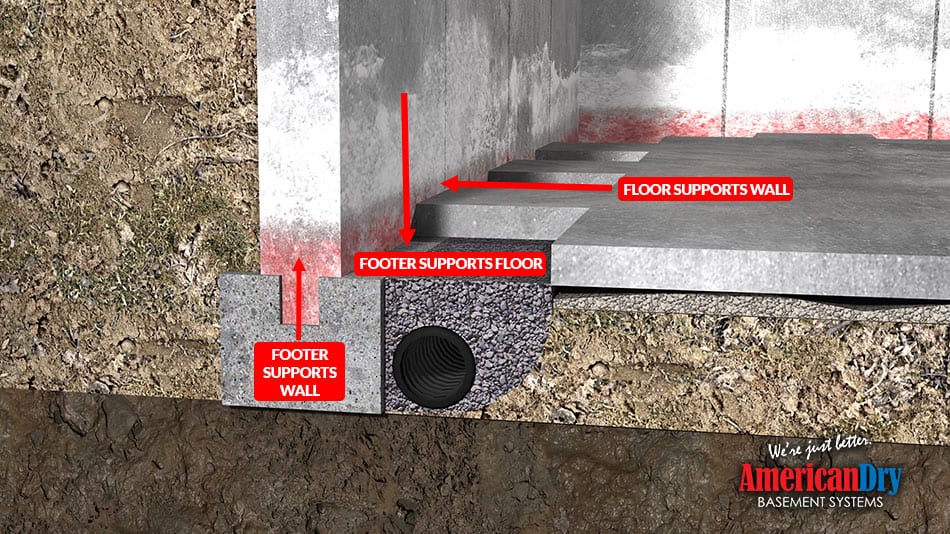Recognizing the Relevance of Structure Waterproofing for Long-Lasting Structural Stability
In the realm of residential property maintenance, foundation waterproofing stands as an essential aspect in guarding structural stability. While frequently neglected, the threats posed by water intrusion can lead to costly and substantial damages that threatens the really structure of a structure. Comprehending the subtleties of waterproofing can expose how it acts as an essential defense device against these dangers.
Threats of Water Intrusion
Water intrusion's effect on a structure can be considerable, leading to a host of potential issues that jeopardize the stability of a building's structure. As dampness seeps right into the foundation, it can deteriorate the structural components, resulting in splits and erosion over time.
Moreover, water intrusion can contribute to the damage of building products. Additionally, water invasion usually leads to raised moisture levels within the structure, which can impact electric systems and various other infrastructure.
Another significant threat connected with water invasion is dirt instability. Excess moisture can modify the make-up of the soil surrounding the foundation, leading to irregular settling and more structural damage - basement crack repair Toronto. Without delay attending to water invasion is important to maintaining the durability and safety and security of any structure

Benefits of Waterproofing
Carrying out structure waterproofing is a crucial step in securing a building from the destructive results of water breach. One of the main benefits of waterproofing is the conservation of architectural integrity. Water seepage can deteriorate the structure, resulting in splits, damaging the overall framework, and possibly leading to pricey repairs. By developing an obstacle against moisture, waterproofing assists preserve the foundation's strength and resilience in time.
In addition, waterproofing substantially boosts indoor air high quality. Dampness seepage can foster mold and mildew development, which not only harms building products however also postures health and wellness dangers to residents. An effectively waterproofed structure decreases these risks, adding to a healthier indoor setting.
Additionally, waterproofing boosts property value. A well-protected structure is an attractive feature for possible purchasers, as it suggests aggressive maintenance and decreases the chance of future structural issues. This financial investment not only safeguards the existing state of the home yet also includes lasting worth.
Last but not least, foundation waterproofing contributes to energy effectiveness. By stopping wetness from entering the building, it helps in preserving constant indoor temperatures, thus lowering the need for extreme home heating or air conditioning and causing energy financial savings.
Typical Waterproofing Methods
When it comes to safeguarding a building's foundation, choosing the proper waterproofing method is important for efficient security versus dampness invasion. One of the most common approaches is the application of liquid waterproofing membranes.
One more common approach is the installment of sheet membrane layers, which are pre-formed sheets of water resistant material, frequently asphalt or polyvinyl chloride (PVC), that are followed the structure walls. These sheets give robust protection and are specifically efficient in areas with high groundwater degrees.
Cementitious waterproofing is an additional widely-used service, particularly in new constructions. This involves using a cement-based substance combined with additives to produce a water resistant finishing. It is easy to apply and cost-efficient, making it a prominent selection for domestic structures.

Indicators of Structure Damage
To keep the stability of a building's structure, identifying the indicators of possible damages is Your Domain Name as essential as picking the suitable waterproofing approaches. One of the most apparent signs of structure damage is the appearance of splits in the wall surfaces, floorings, or foundation itself.
Uneven floorings are an additional typical symptom, usually triggered by the settling or changing of the structure. House owners may likewise see windows and doors coming to be hard to open or shut, showing possible imbalance because of structure activity. Water breach indicators, such as dampness, mold and mildew, or mold in the cellar, recommend insufficient waterproofing or drainage issues, which can aggravate foundation issues.

Picking the Right Service Provider
Picking the right professional is crucial for ensuring effective structure waterproofing projects. This choice considerably impacts the top quality and longevity of the job done, shielding your financial investment and guaranteeing structural stability. Begin by researching potential service providers with a proven track document in structure waterproofing. Look for business with comprehensive experience and a strong profile of effective projects. Verifying their credentials is necessary; guarantee they are licensed, insured, and bonded.
It is crucial to get numerous estimates to contrast pricing and range of job supplied by each contractor. Be cautious of quotes that are substantially reduced than others, as this might indicate poor products or workmanship.
Confirm their understanding of neighborhood structure codes and regulations to avoid potential conformity concerns. By taking these actions, you can choose a service provider that will deliver top quality, long lasting waterproofing services.
Verdict
Foundation waterproofing is important for preserving structural integrity and avoiding potential damages triggered by water breach. By applying effective waterproofing techniques, the threats of mold development, material damage, and soil instability are dramatically minimized. This preservation not just safeguards the building's value but additionally adds to improved interior air top quality and power efficiency. Cautious option of ideal waterproofing techniques and qualified service providers is vital for making sure long-lasting security and longevity of foundational frameworks.
In the world of building maintenance, foundation waterproofing stands as a critical element in securing architectural stability.Applying structure waterproofing is a critical action in protecting a structure from the detrimental impacts of water intrusion. One of the most apparent signs of foundation damage is the look of fractures in the wall surfaces, floorings, or foundation itself. Water invasion signs, such like it as wetness, mold and mildew, or mold in the basement, recommend poor waterproofing or drain concerns, which can exacerbate structure problems.
Structure waterproofing is important for maintaining structural integrity and preventing prospective damage caused by water breach. - Leaky basement Toronto